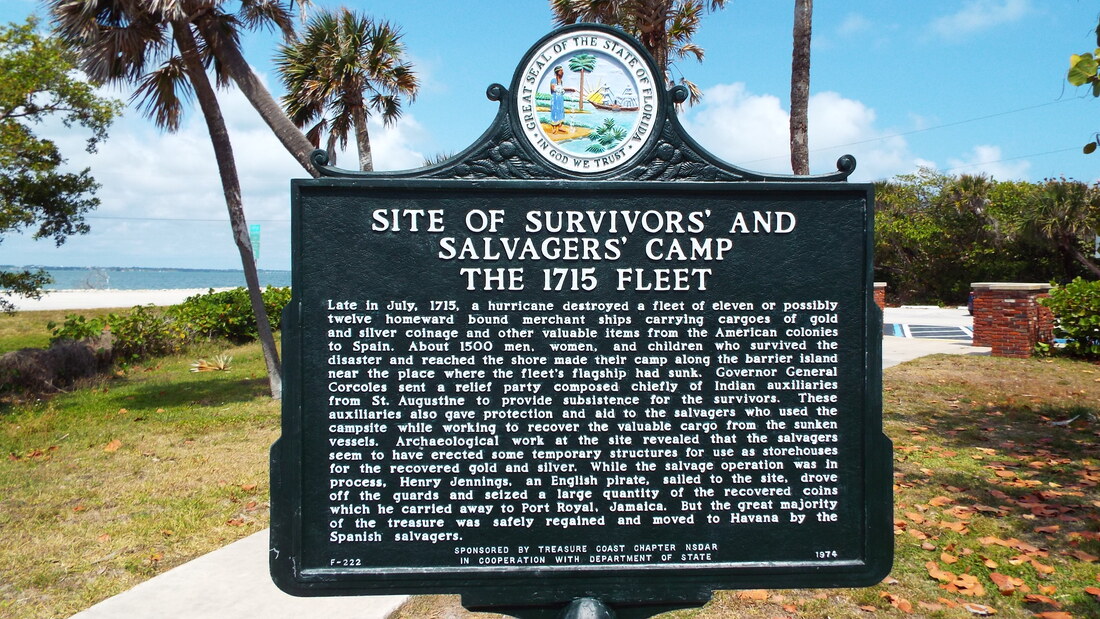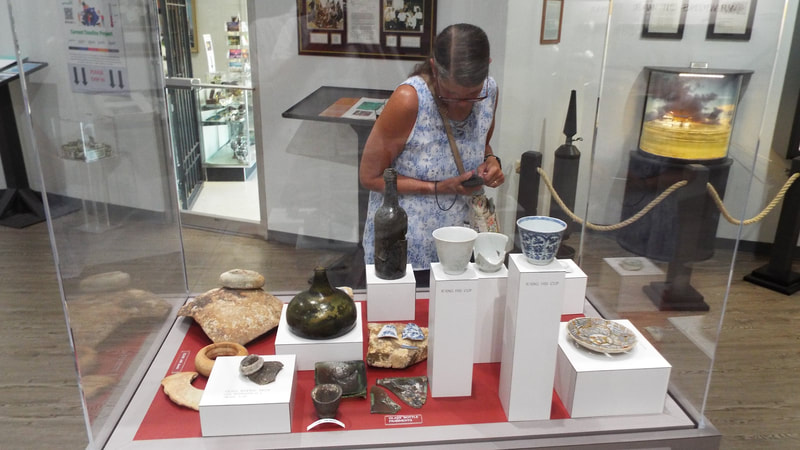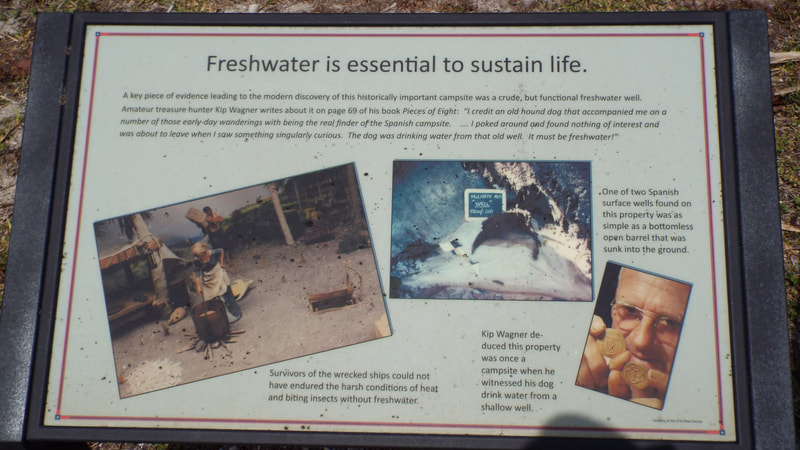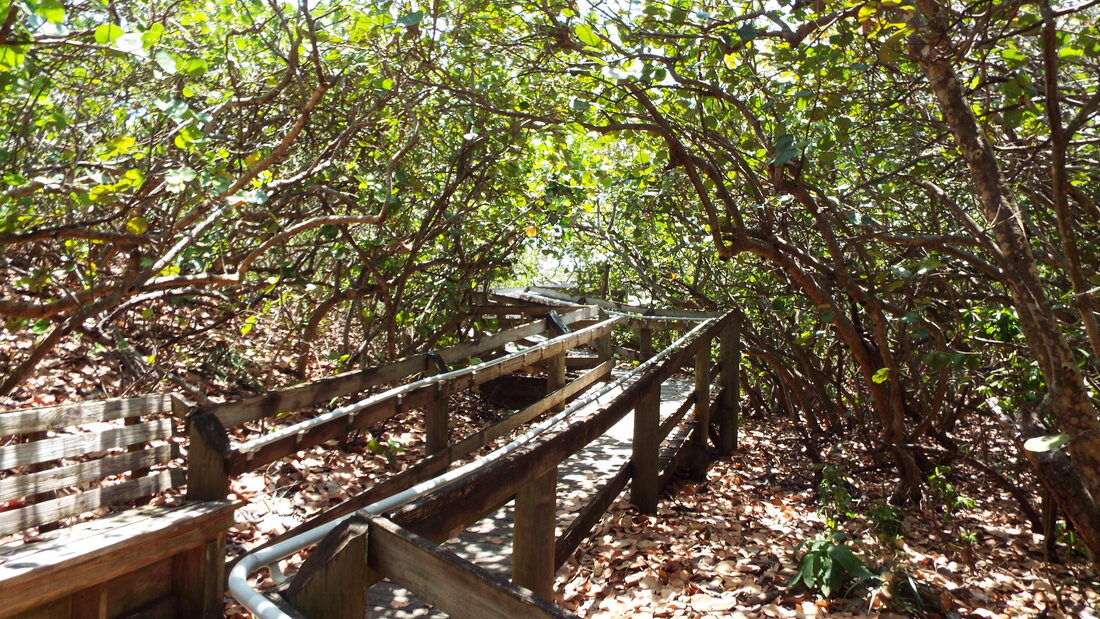|
There are actually two museums at the park. One is the McClarty Treasure Museum which is dedicated to items recovered from the 1715 Spanish treasure fleet that sunk off the shore. History Warning: (I will break it up with some pictures from the museum.) In July of 1715 a fleet of twelve ships filled with treasure and headed to Spain from Havana. With more than 3,000 sailors, officials, and families including children on board. The cargo was primarily silver coin and ingots but also included lots of gold, gems, and other goods. In silver there were millions of coins (pieces of eight), gold, jewelry, and the King’s treasure. Many of the officials had personal chests with gold and jewelry which was not counted in the inventory. I was a bit confused about the number of coins, but they were 1/8th of an ounce of silver each. That made them small and thin. The Spanish has a standard size small chest that would hold 3,000 coins each and weight 25 pounds coins and chest together. The chests could be stacked in the hold tight together and counting was much easier by chest than individual coins. The fleet was caught in a hurricane and all but one ship was driven into the sandbars off the coast. Ships were battered by the waves and broke apart spilling their contents. About 1500 people survived and a temporary camp was built to care for the injured, bury the dead, and recover what they could from the wrecked ships. They were able to dig two shallow wells to find fresh water and survived on seafood until supply ships arrived from Havana. From documentation of the recovery efforts several million pieces of eight had been recovered along with gold and jewelry, and a great part of the King’s treasure. This was possible because for years parts of the ships could be seen at low tide. Not all of the recovered treasure made it back to Havana. The Pirate Henry Jennings raided the camp in 1716 and 120,000 pieces of eight and other valuables were taken. The salvage was a target for pirates but only Jennings successfully raided the site. In 1718 the camp was abandoned. Soon after those other ships came to try to recover what they could but soon they gave up because they could no longer identify where the ships sank. For 250 years there was no documentation of salvage attempts and location of the fleets sinking was forgotten. 1948 Kip Wagner was walking along the beach South of Sebastian Inlet when he found Spanish silver coins. He then borrowed a metal detector and over the next several months discovered many more coins. Wagner cut a hole in an old surfboard and glued some glass in it so he could look at the bottom while paddling around off shore. Soon he found cannons and started salvage of the wreck. This began a salvage that eventually found 11 ship wrecks and many 1000’s of both silver and gold coins along with other treasures. Mr. Wagner joined with 7 of his friends to start a salvage operation called the Real 8 Company. In 1964, Mel Fisher started his career as a treasure hunter on the wrecks of the 1715 fleet after being hired by Wagner's group. That same summer he found what he called the “Carpet of Gold” made of thousands of gold pieces. The museum is at the site of the survivors and salvage camp. People have found treasure along the shore right after storms including Mr. McClarty who eventually donated the land for a museum to hold treasure found from the 1715 fleet. Coins are found along the shore every year and treasure are still being recovered by divers offshore. The museum has a walkway to the ocean. Having a sense of humor, a Pirate flag is flown at the overlook. Pirate Henry Jennings did come and raid the site for treasure one time. On our way back to the campground, we stopped in at the Sebastian Fishing Museum. Since the earliest settlements in the area fishing has always been important. On the highway is a tribute to Ponce de Leon landing spot in this area.
0 Comments
Leave a Reply. |
AuthorWe are a couple who have started on a new adventure... Archives
February 2024
Categories |
























 RSS Feed
RSS Feed